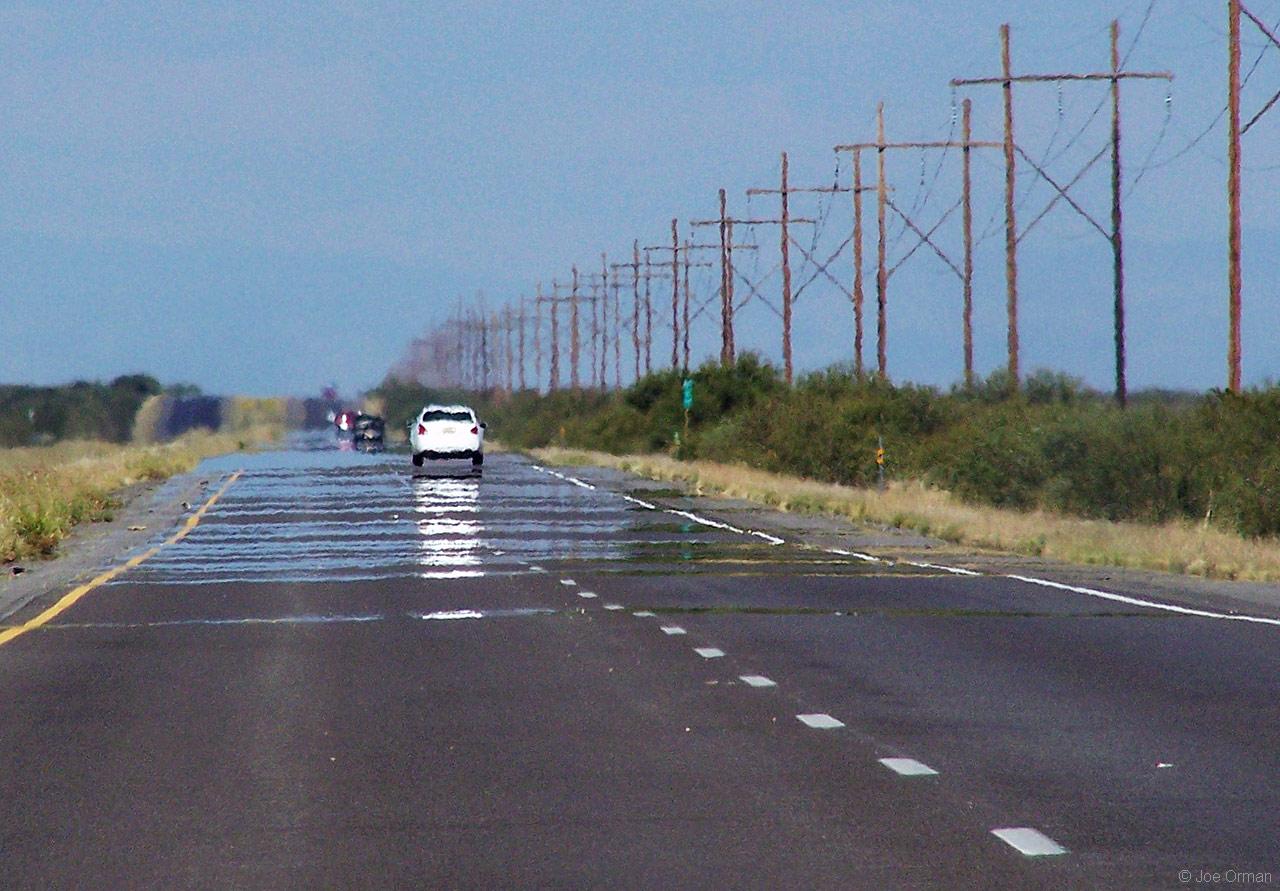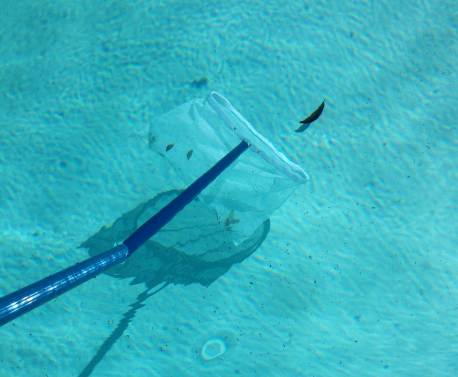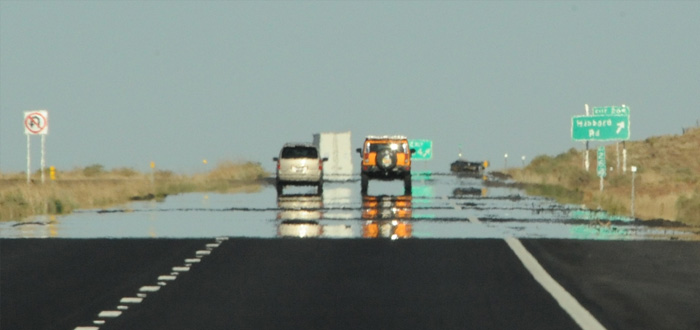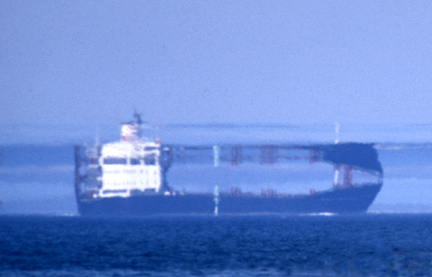
Why Do We See Mirages?
Phil Kesten
Do you look around the natural world and wonder? Wonder why things work the way they do, why things are the way they are? If you do, then there’s a bit of physicist inside of you! Physics is all around us.
Let’s wonder together about mirages – things that you see, such as pools of water that appear on the road when you’re driving, that aren’t really there.

A Road Mirage
When light from an object enters your eyes, your brain forms an image by tracing that light directly away from you along a straight line. For example, when light from the sky way out in front of you comes directly to your eyes, your brain traces that light straight back and lets you know that the sky is, well, way out in front of you. But not every object you see is located directly along the direction in which you see it.
Perhaps you have been frustrated by reaching into the surf for a smooth pebble resting on the bottom, only to close your fingers on a fistful of water. Or tried over and over to scoop up a pesky leaf in your swimming pool, always missing it. The light reflecting off the pebble and the leaf changes direction as it exits the water. Neither the pebble nor the leaf – nor the net at the end of the pole – is where you see it.
You are experiencing an optical illusion. A mirage is an optical illusion.

A Pool Mirage
You can experience a mirage as you drive. Some light is heading down toward the road in front of you. Usually that light just hits the road and is absorbed – you don’t see it. But the direction of that light can change as it travels through the air.
The speed that light travels through a medium depends on its density. Light goes slower through water, for example, then through air. And when light crosses a boundary from one medium to another, if the speed of the light changes, its direction changes as well.
Imagine light coming from the sky shining down toward the road in front of you. If the road is hot, the air right above it is hot too. That makes it less dense than the cooler air higher up above the road. Light passing from the higher, cooler air into the lower, warmer air is bent up just a bit. As light passes through more layers of increasingly warmer air closer to the ground, it bends up more and more. If it bends up enough the light will reach your eyes instead of hitting the road and you will see it.

How Warmer and Cooler Air Bend Light
But where do you see it? Your brain traces the light straight back along the direction it comes to your eyes. Your brain sees a blue, shimmery patch – light from the sky! – coming up to your eyes from the road. And what could make a blue, shimmery patch on the road – a pool of water, of course!

The illusion of a pool of water on the road
Sometimes the temperature of the air closest to Earth’s surface can be cooler than air above it. When such a temperature inversion occurs, light traveling upward from an object can be gradually bent downward, making it appear that the object is floating up above the surface. This kind of “superior” mirage is most often seen above the surface of a body of water near the shore, where the water can keep the air directly above it cool as the sun heats up the air higher up.

A "Superior" Mirage
A desert mirage makes an appearance in a recent television commercial for Fiat. What physics did the makers of the commercial get right or wrong?

